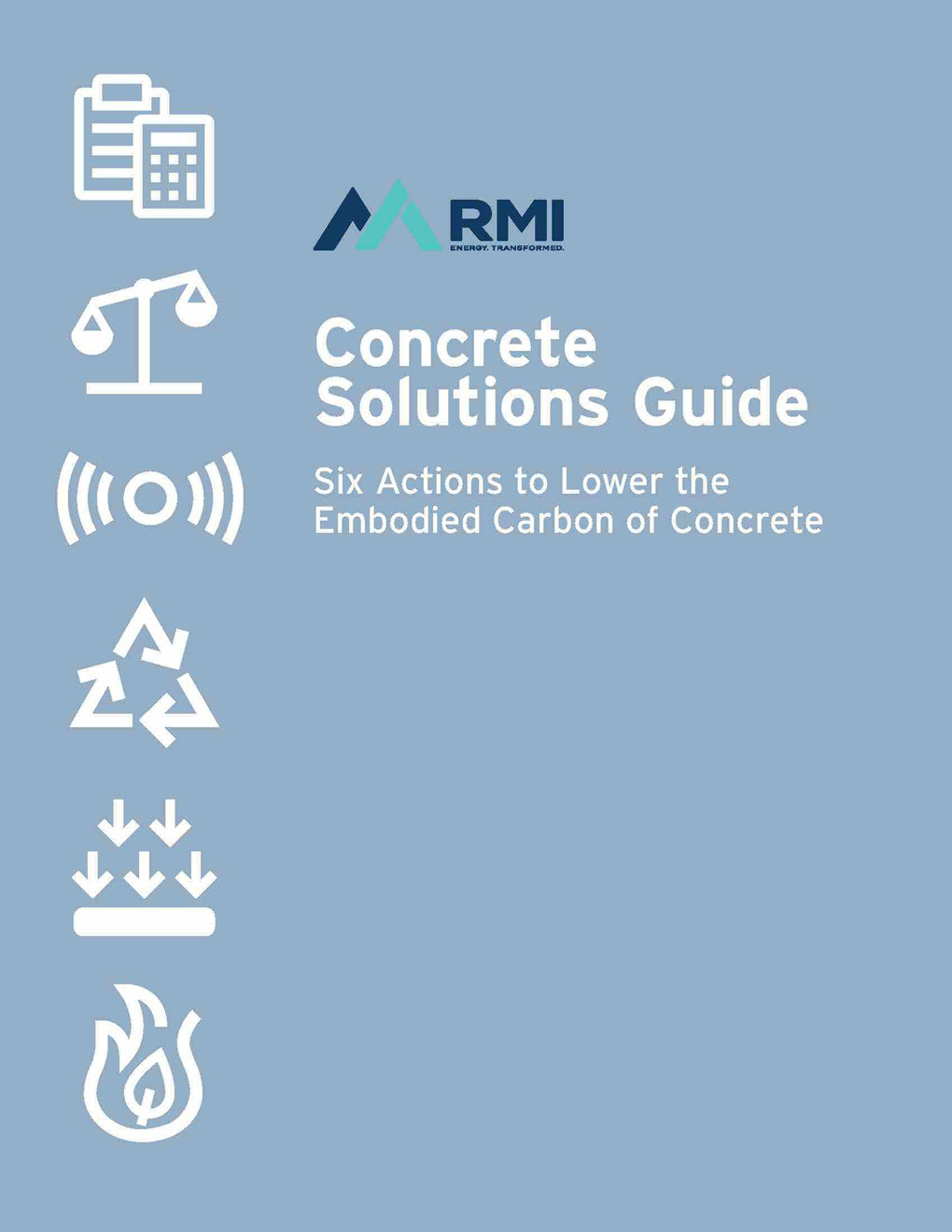By Don Marsh
An energy market-driven nonprofit, RMI, offers credible perspective in its just-released Concrete Solutions Guide, geared to construction interests taking stock of the carbon dioxide emissions factor behind their project materials, products and methods. Posted at www.rmi.org, the document presents specific opportunities for “a nearly ubiquitous material with a sizable climate impact” and expands on the need to optimize mixes to reduce overall embodied carbon in buildings at little to no additional cost.
RMI centers on promoting market-driven measures so global energy systems can “secure a clean, prosperous, zero-carbon future.” Instead of climate alarmism and belaboring cementitious materials’ carbon footprint, it formats Concrete Solutions around six market-ready, scalable actions proved through decades of research and real-world trials:

1. Know Your Numbers: Performance-Oriented Specifications
2. Mix It Up: Supplementary Cementitious Materials
3. Plug and Play: Sensors Save Time, Money and Materials
4. Embrace Circularity: Concrete Recycling
5. Carbon as a Service: Sequestering CO2 in Concrete
6. Use Green Heat: Decarbonize Kiln Technology
Clever icons accompany each action and suit forthcoming templates for CO2 measurement in construction specifications. “Know Your Numbers” is a fitting lead. It speaks to positions concrete producers take in the face of prescriptive specifications and having to err on the side of excess cement paste for too much of their output.
Concrete Solutions matches the numbered actions with key cement-concrete supply chain stakeholders: Concrete producers (2, 3, 5); Cement producers (2, 6); Developers (1, 4, 5); Designers (1, 2, 4); Contractors (3, 4, 5); and, Policymakers (all of the above). “The cement and concrete value chain features a complex network of stakeholders,” authors contend. “Every actor has an opportunity and a role to play in lowering the embodied carbon of concrete.”
The guide’s brevity and substance—six plausible calls to action in about 300 words—are a credit to RMI Climate Intelligence Senior Associates Charles Cannon and Laclan Wright and Supply Chain Emissions Initiative Associate Valentina Guido. Contributors or sources assisting them include Lori Tiefenthaler of Lehigh Hanson Inc.; Ryan Cialdella of Ozinga Ready Mix Concrete Inc.; Lionel Lemay and Tien Peng of the National Ready Mixed Concrete Association; Alana Guzzetta and Juan Gonzalez of U.S. Concrete Inc.; and, Shawn Kalyn of Votorantim Cimentos North America.
Concrete Solutions was released with Reducing Embodied Carbon in Buildings, which lays out the framework for cutting CO2 emissions associated with building materials by nearly half in a cost-effective way. “The upfront carbon produced when we make materials has immediate impact on our climate,” says RMI Carbon-Free Buildings Program Principal Victor Olgyay, AIA. “With the release of Reducing Embodied Carbon and Concrete Solutions, we demonstrate how engineers, architects and policymakers can easily reduce this impact.”
RMI sees project owners implementing report practices as better prepared for future code changes or policy measures—carbon tax, procurement guidelines or other regulatory mechanisms—that incentivize or require low embodied carbon. Producers will do their part making good on the six Concrete Solutions actions.